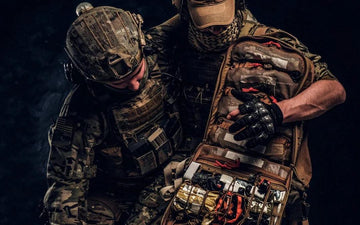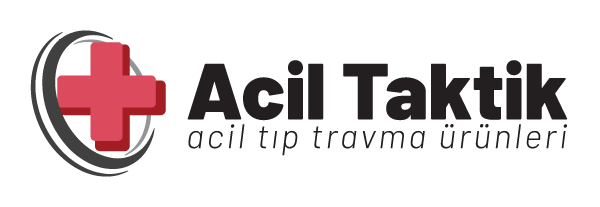
In modern military applications, the importance of protective ballistic helmets and vests, as well as effective first aid practices, is increasing in order to reduce the number of injuries. Injuries, especially to the head and chest areas, require rapid intervention by medical personnel. In this context, the use of effective hemostatic plugs is of critical importance to stop the bleeding of the injured as soon as possible.
Hemostatic Plugs See

Importance of Hemostatic Plugs
Hemostatic products, which are accepted all over the world, are developed through biomedical research in order to adapt to various combat environments. An ideal hemostat should have the following features:
- Effective and easy to use
- Safe, antibacterial and antifungal
- Logistically convenient
- Durable and compatible with night vision systems
- Does not generate heat during use
- It should be of a structure that does not allow re-bleeding and does not cause pain to the injured person.
Proper use of hemostatic plugs is a vital step in effectively controlling bleeding in conflict wounds, thus reducing the risk of wound infection.
Chitosan and its Hemostatic Properties
The raw material of new biotechnological hemostatic plugs is chitosan. Chitin is the most abundant natural polymer in the world, found in the shells of arthropods and in the cell walls of some bacteria. The hemostatic properties provided by chitosan are independent of the body's clotting mechanism and also stand out with its antibacterial and antifungal effects. According to current scientific research, chitosan was able to form a clot for at least 2 hours in 4.4 mm aortic bleeding models.
Mechanisms of Action of Hemostatic Plugs
The mechanisms of action of hemostatic plugs depend on the technologies used in product manufacturing. In particular, hemostatic plugs produced with nanotechnology provide the following advantages:
- Osmotic flow filtration
- Cationic bonding allows positively charged molecules to adhere to negatively charged electric fields.
- Activates platelets to provide rapid fibrin clot formation
- Accelerates clotting in patients taking blood thinners
Areas of Use
These hemostatic plugs can be used in various operations and emergency situations:
- Operations in residential areas and rural areas
- Armed deep operations carried out by Special Forces Elements
- Mine and explosive disposal teams in conflict areas
- Border stations and independent units with limited emergency response capabilities
- At all checkpoints and emergency services
Properties of Hemostatic Plugs
- Should not generate heat during use
- It should give definitive results in patients using blood thinners.
- Should provide easy placement
- Should not cause additional irritation to the injury site
- Must be disposable and easy to open
Conclusion
A significant portion of casualties on the battlefield are due to the inability to respond to medical intervention. For this reason, hemostatic plugs have become an indispensable element of the modern first aid kit. Especially in areas where tourniquet use is not possible, these plugs play a life-saving role. Our country can achieve significant success by including such biotechnological products in its kit.
Required Materials
The materials that should be included in the war packages are as follows:
- Hemostatic Plug - THE FASTEST STOPPER
- Modern combat tourniquet - Can be applied with one hand in 10 seconds.
- Trauma bandage made of medical cotton - 200% elastic.
- Adhesive valved film - For open chest trauma.
- Vacuumed gauze dressings
- Trauma intervention reference chart
- Aluminum splints
- Self-adhesive bandage and safety pin
- Airway openers, IV sets, and resuscitation fluids
These supplies are critical to providing effective first aid.



